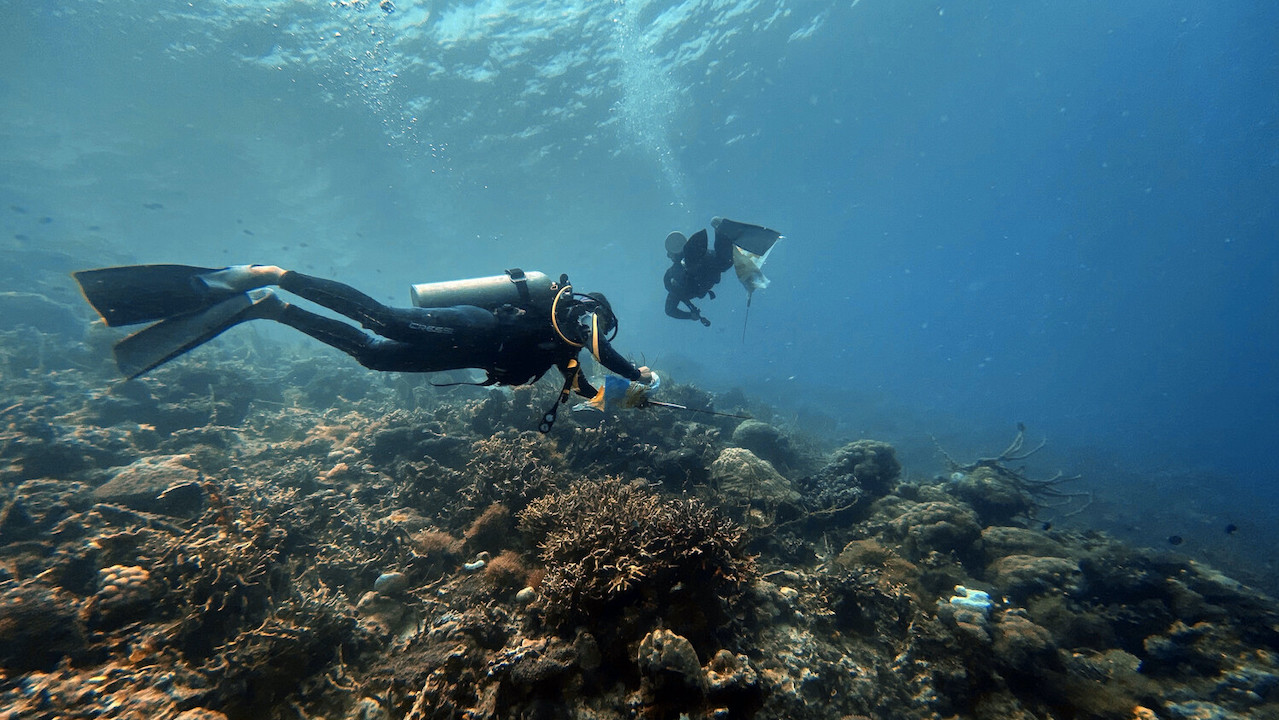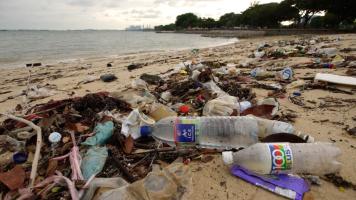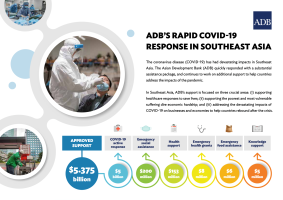
In Palawan, Philippines, divers help clean up the ocean and keep coral reefs healthy. Photo credit: ADB.
The virtual 7th East Asian Seas Ministerial Forum endorsed a roadmap to 2030 that is anchored on sustainability and blue economy principles.
Eleven countries renewed their commitment to strengthen green recovery and ocean governance at the virtual 7th East Asian Seas Ministerial Forum last month.
Ministers from Cambodia, Democratic People’s Republic of Korea, Indonesia, Japan, Lao People’s Democratic Republic, People’s Republic of China, Philippines, Republic of Korea, Singapore, Timor-Leste, and Viet Nam signed the Preah Sihanouk Ministerial Declaration on 2 December 2021. These countries are members of the Partnerships in Environmental Management for the Seas of East Asia (PEMSEA).
Center of economic growth and marine biodiversity
The East Asian Seas comprise a globally important region. It is a center of economic growth and marine biodiversity. Millions of people depend on the ocean economy for their food and livelihood. The bulk of global fish and aquaculture production come from the region.
These waters are home to a third of the world’s mangrove forests, seagrass beds, and coral reefs. According to PEMSEA, ecosystem services in the region is worth around $2 trillion, while blue carbon value is estimated at $68 billion for mangroves and $40 billion for seagrass.
However, the region faces many challenges, including climate change, pollution, biodiversity loss, and overfishing.
Developing the blue economy
Ministers at the forum endorsed the PEMSEA Roadmap to 2030, which is anchored on sustainable development and blue economy principles. They also recognized the impact and opportunities of the COVID-19 pandemic and resolved to build back stronger and greener.
The PEMSEA member countries adopted the blue economy model at the 4th East Asian Seas Congress in Changwon in 2012. PEMSEA defines the blue economy as “a practical ocean-based economic model using green infrastructure and technologies, innovative financing mechanisms, and proactive institutional arrangements for meeting the twin goals of protecting our oceans and coasts and enhancing their potential contribution to sustainable development, including improving human wellbeing, and reducing environmental risks and ecological scarcities.”
The group’s initiatives align with efforts to promote ocean health and the development of the blue economy in Southeast Asia, which is part of the East Asian Seas region.
In October, the leaders of the Association of Southeast Asian Nations (ASEAN) agreed to explore cooperation on the blue economy in areas such as marine environmental protection, illegal fishing, ecosystems protection, sustainable aquaculture and fishing practices, sustainable production and consumption, biotechnology, marine industrial development, marine and plastic pollution, food security, trade, coastal tourism and heritage conservation, maritime transport, security and safety of navigation, marine science, ocean energy, sea and ocean governance and management, and statistics and data analytics, as well as capacity-building, digitization, and innovation.
In November, the Blue SEA (Southeast Asia) Finance Hub was established by the Asian Development Bank (ADB) to support the development of the blue economy in ASEAN. Based in Jakarta, the hub will help ASEAN countries develop and finance projects that contribute to ocean health and promote circular economy approaches. Its target is to create bankable projects worth $300 million by 2024 and mobilize capital from both public and private sources.
This article was first published by BIMP-EAGA on 16 December 2021.

BIMP-EAGA
The Brunei Darussalam–Indonesia–Malaysia–Philippines East ASEAN Growth Area, or BIMP-EAGA, is a cooperation initiative established in 1994 to spur development in remote and less developed areas in the four participating Southeast Asian countries.

